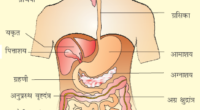General Knowledge: Reproduction questions
1. Testosterone is produced by: (a) spermatozoa; (b) sustentacular cells; (c) Endocrinocytes; (d) the hypothalamus
2. The acrosome of a sperm cell contains: (a) chromosomes; (b) mitochondria; (c) testosterone; (d) digestive enzymes
3. During the menstrual cycle, LH is at its highest levels: (a) during the menstrual phase; (b) just prior to ovulation; (c) just after ovulation; (d) just before menstruation begins
4. Progesterone is found in the woman’s blood: (a) during the first five days of the pre-ovulatory phase; (b) in very high concentrations just prior to ovulation; (c) in the post-ovulatory phase; (d) levels of progesterone never change
5. During the menstrual cycle, the endometrium would be at its thickest: (a) during the menstrual phase; (b) just prior to ovulation; (c) just after ovulation; (d) late in the post-ovulatory phase.
6. A human diploid cell, found within the testes, is located: (a) adjacent to the seminiferous tubule lumen; (b) approximate half the distance from the outside of the tubule to the lumen; (c) next to or near the outer basement membrane of the seminiferous tubule; (d) just outside the tubules in the interstitial tissue
7. A function of FSH in the male is to: (a) inhibit progesterone; (b) initiate testosterone production; (c) increase protein synthesis; (d) initiate spermatogenesis
8. Final maturation of the sperm occurs in the: (a) epididymis; (b) seminiferous tubules; (c) prostate gland; (d) female reproductive tract
9. Seminal vesicles produce: (a) sperm cells; (b) testosterone; (c) fructose-rich fluid; (d) mucus
10. Sustentacular (Sertoli or Nurse) cells produce: (a) testosterone; (b) inhibin; (c) estrogen; (d) LH
11. Repair of the endometrium during the preovulatory phase of menstruation is due to rising levels of: (a) FSH; (b) estrogen; (c) HCG; (d) progesterone
12. Progesterone is produced by the: (a) secondary oocyte; (b) corpus luteun; (c) stroma of the ovary; (d) theca cells
13. The approximate number of days for a sperm to be produced in a human is: (a) 24; (b) 48; (c) 12; (d) 72
14. The meiotic division in oogenesis in which the egg has 23 chromosomes OCCURS: (a) before birth; (b) only if the egg is fertilized; (c) each month under the influence of FSH & development of follicle.
15. Sperm are formed in the: (a) seminiferous tubules; (b) epididymis; (c) vas deferens; (d) small pockets of the Endocrinocytes
16. LH: (a) is produced by the ant. pituitary; (b) triggers ovulation; (c) produces and stimulates the formation of the corpus luteum; (d) all of the preceding are true; (e) none of the answers are correct
17. Which hormone rescues the waning corpus luteum in a pregnant woman? (a) LH; (b) FSH; (c) progesterone; (d) HCG; (e) estrogen
18. Which hormone forms the basis for the pregnancy test? (a) HCG; (b) FSH (c) estrogen; (d) progesterone
19. Which hormone causes cervical mucus to become thick and viscous? (a) HCG; (b) estrogen; (c) progesterone; (d) LH
20. Leydig cells (endocrinocytes) are stimulated by what hormone? (a) estrogen; (b) FSH; (c) LH; (d) inhibin
21. Which duct is used for the passage of urine in the female, but urine and sperm in the male? (a) epididymis; (b) vas deferens; (c) ureter; (d) urethra
22. What structure in non-pregnant female produces estrogen and progesterone for 12 to 14 days? (a) ovary; (b) follicle; (c) corpus luteum; (d) egg
23. What two hormones are involved in POSITIVE FEEDBACK in the female? (a) LH and Progesterone; (b) FSH and Inhibin; (c) Estrogen & Progesterone; (d) LH & Estrogen
24. When Estrogen increases in the female’s blood during the pre-ovulatory phase, what hormone is decreasing (due to negative feedback)? (a) LH; (b) inhibin; (c) FSH; (d) progesterone
25. How many chromosomes are found in a human sperm cell nucleus? (a) 46; (b) 23; (c) 48; (d) 24
27. Sustentacular (Sertoli) cells: (a) protect, nourish, and control production of sperm; (b) release gonadotropic releasing hormone from the hypothalamus; (c) maintain testosterone levels in the body; (d) maintain temperature in the scrotum
28. If a sperm is found in the vas deferens, it has just come from what duct? (a) seminiferous tubules; (b) urethra; (c) epididymis; (d) ejaculatory duct
29. What hormone is responsible for ovulation AND development of the corpus luteum? (a) FSH; (b) estrogen; (c) progesterone; (d) LH
30. What hormone is responsible for decreasing the amount of FSH in the male, and consequently, reduces sperm production? (a) inhibin; (b) testosterone; (c) LH; (d) there is no hormone that has this effect
Answer
1c
2d
3b
4c
5d
6c
7d
8a
9c
10b
11b
12b
13d
14c
15a
16d
17d
18a
19c
20c
21d
22c
23d
24c
25b
27a
28c
29d
30a

